New Art Museum: ‘Everybody needs to kind of pause, give it a chance’
It’s been compared to an Amazon warehouse, a monster truck, and a shower-curtain liner. Its placement in the historic center of Princeton’s campus, steps away from Prospect House, has been likened to the destructiveness of a nuclear explosion. At last year’s Reunions, one attendee claimed, “It appalled every human being who looked at it.”
It’s fair to say that the new Princeton University Art Museum, scheduled to open Oct. 31, is not a universally beloved building.
Designed by the eminent Ghanaian-British architect David Adjaye, the new building replaces a sprawling 77,000-square-foot museum, library, and academic complex that had progressed through five rounds of construction, demolition, renovation, and rethinking since the 1880s. In its final iteration, the complex dated largely from the 1960s and 1980s but also incorporated part of McCormick Hall, a 1923 building designed in Italian Gothic style by Ralph Adams Cram, the acrhitect who spearheaded Princeton’s early 20th-century commitment to collegiate Gothic architecture.
The old building’s piecemeal evolution “left us with a very problematic facility,” museum director James Steward said during a September 2020 online presentation: The building’s galleries accommodated only 2% of the 110,000 objects in the collection, and space for study and social events was inadequate. The building’s layout also meant that European and American art was displayed in upper galleries while much non-Western art was displayed below, a configuration that implied “a value placed on European and North American cultures at the expense of the rest of the world,” Steward said.
The new museum is designed in a modern architectural idiom, with an exterior composed largely of stone and bronze panels. With 146,000 square feet spread across three floors, it includes 80,000 square feet of exhibition space — an increase from 30,000 square feet — and allows most art to be displayed on a single floor.
Like the old complex, the new one will also house Princeton’s Department of Art and Archaeology and the Marquand Library of Art and Archaeology, the only part of the old building that remains intact. The goal is a warm, inviting public space that welcomes “people who don’t see themselves as traditionally being museum-goers,” Steward said.
(Most of Adjaye’s work on the project had been completed before mid-2023, when three women accused him of sexual assault and harassment, Steward said at the time. Adjaye denies the charges.)
University architect Ronald J. McCoy *80 calls the new museum “contemporary, functional, and incredibly sensitive to the traditions of the campus.” Alumni dissenters call it a monstrosity — ugly, hulking, and too large for its site.
“A great prison,” says architecture critic Catesby Leigh ’79, who visited last summer.
“A giant Jersey barrier factory,” says architectural historian Sean Sawyer ’88, who has seen pictures.
“You’re losing green space that’s been there since Victorian times or beyond,” says art historian W. Barksdale Maynard ’88, who saw the work in progress —and reported fellow Princetonians’ unfavorable reactions — during last year’s Reunions.
Critics of the new museum also regret losing what remained of Cram’s century-old building, one of three he designed on campus.
“They just decided to put a nuclear bomb and blow it up and put this massive, big, brutalist thing in the center of campus,” says Sawyer, who heads the nonprofit that operates Olana, a historic estate in upstate New York. “I’m literally terrified to go back to campus. I feel like I will be in tears.”
Not every Princetonian shares those fears.
In a March op-ed in The Daily Princetonian, architecture major Kayleen Gowers ’25 called the new museum “undeniably compelling,” despite some reservations about its design. “Whether it will integrate seamlessly or stand apart as an object to be admired from a distance remains to be seen,” Gowers concluded.
McCoy insists that when visitors step back and see the completed museum’s seven interconnected pavilions in the context of the larger campus fabric, they will be able to appreciate how the new structure fits into the landscape and resonates with its neighbors.
“Everybody needs to kind of pause, give it a chance,” he says. “See the museum in its finished state. See how it relates to campus, see how it hosts events, see how it frames the art. And then have an opinion.”


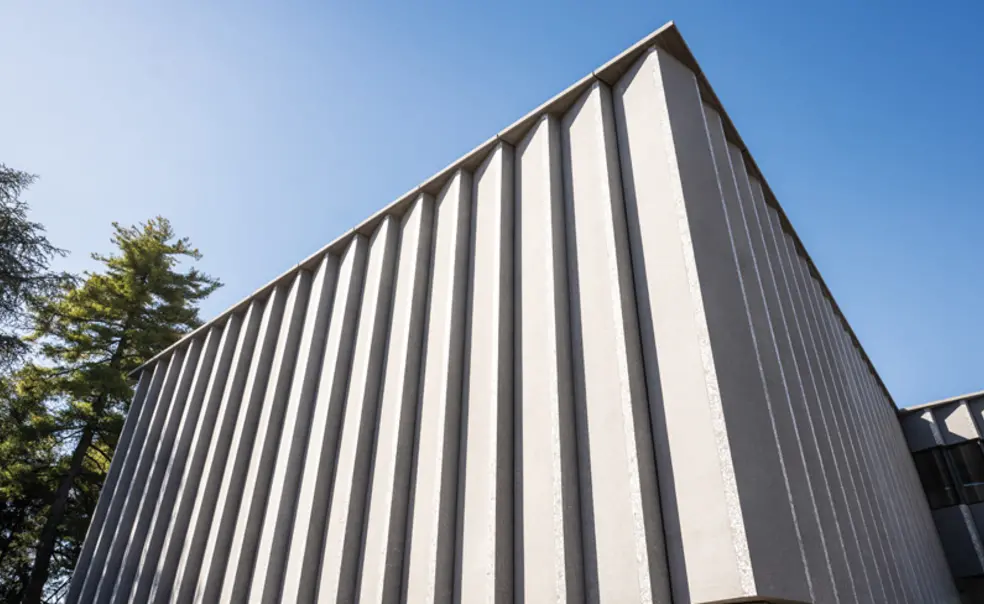
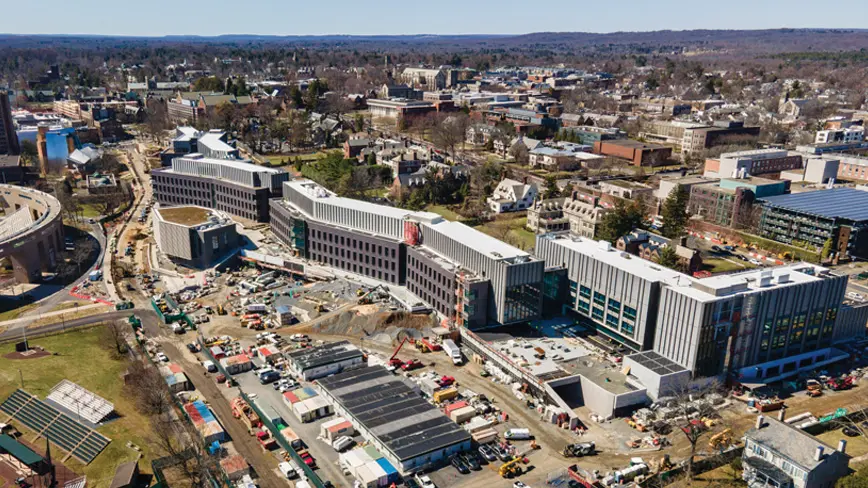
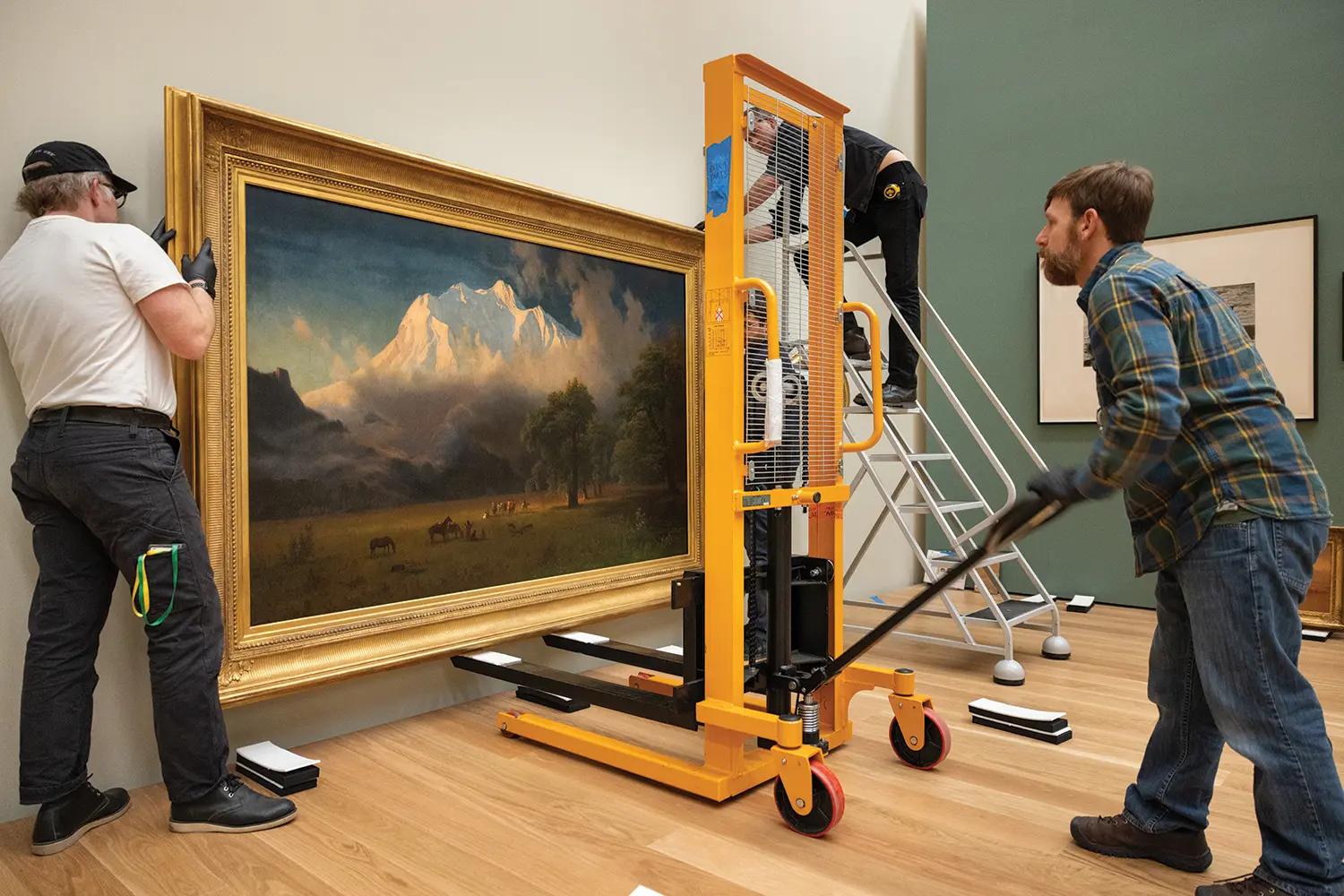
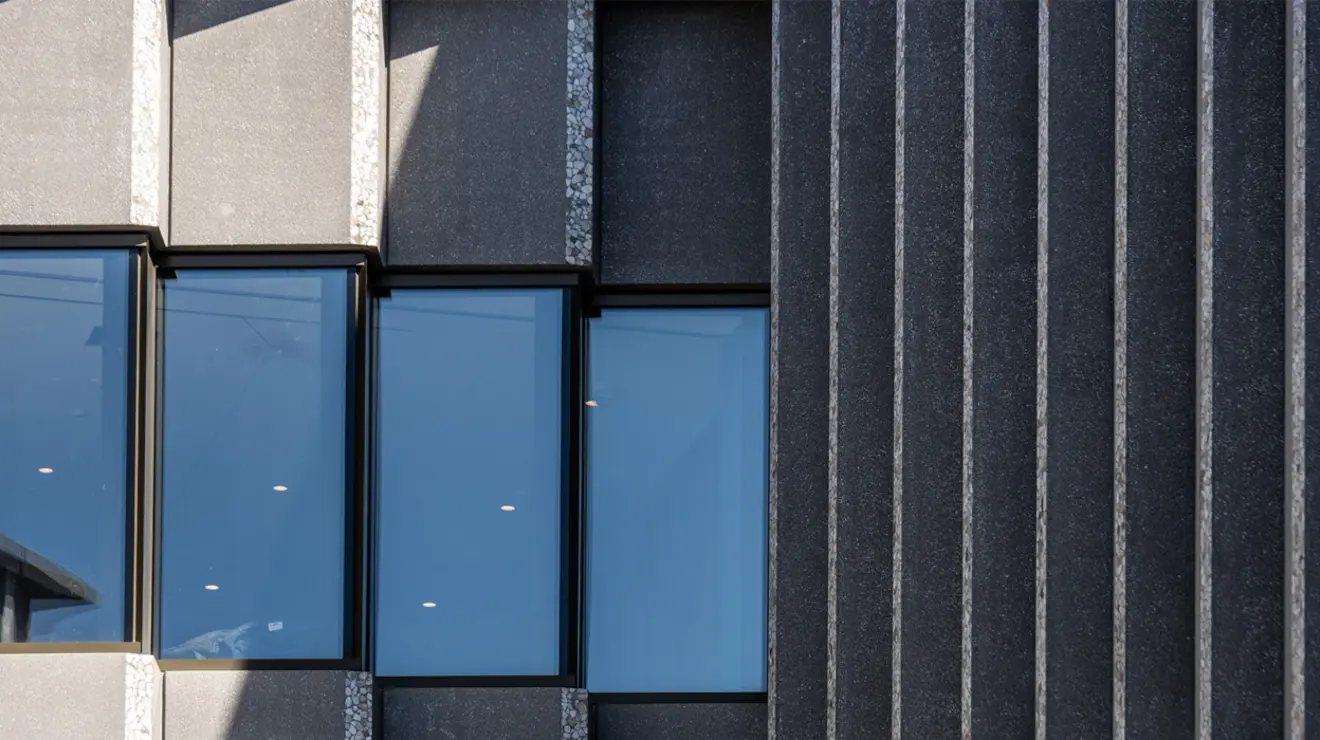
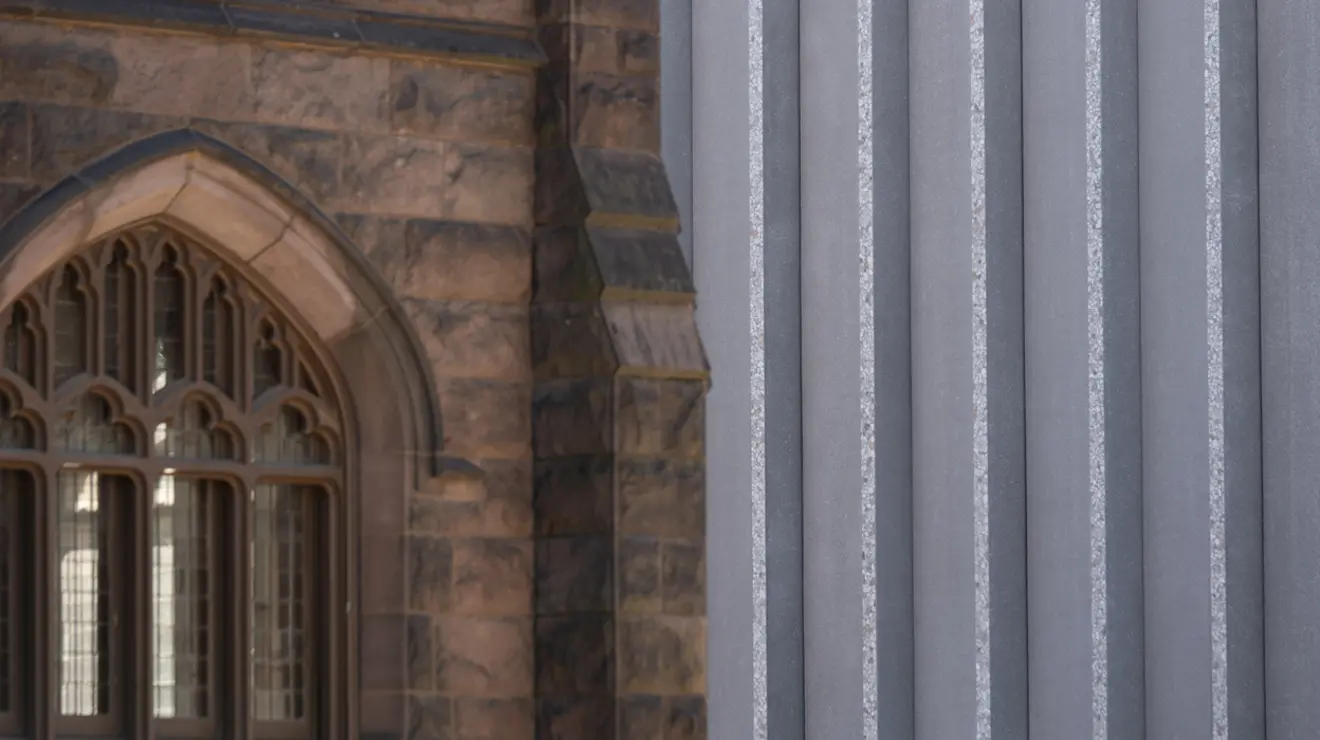
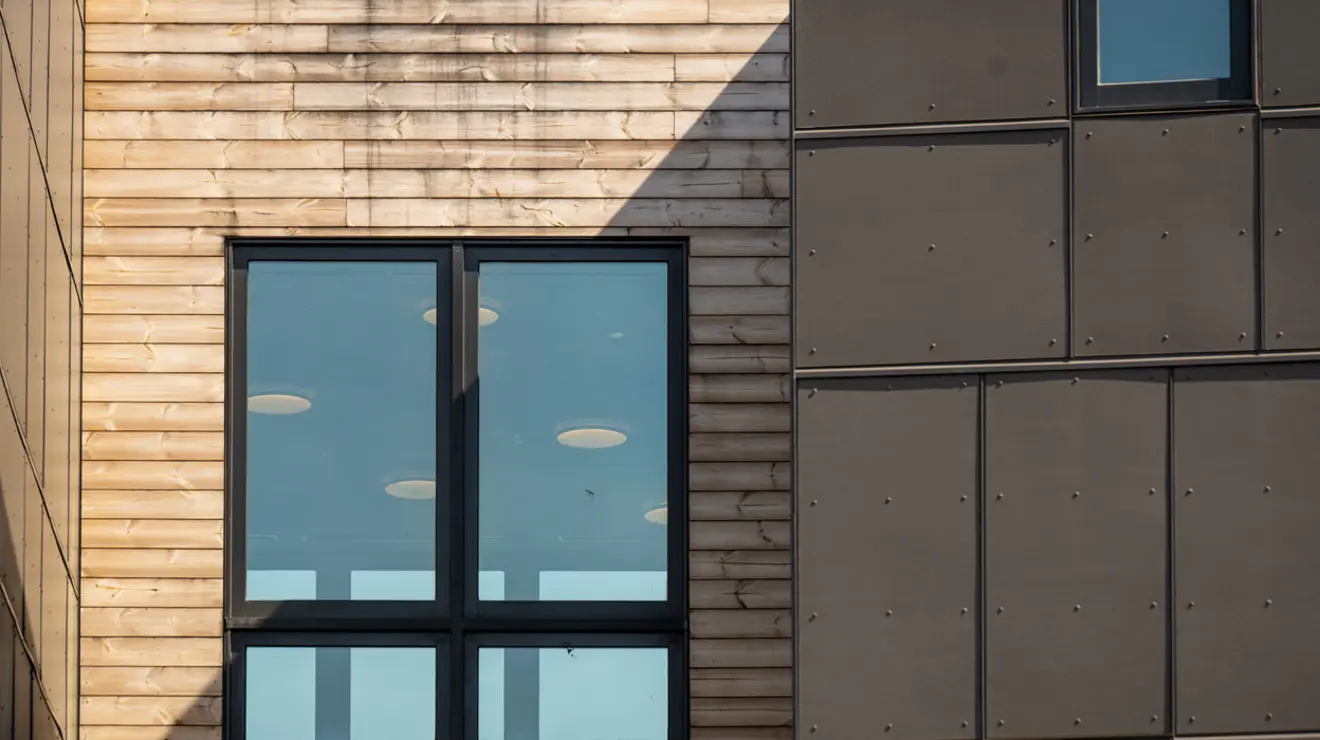
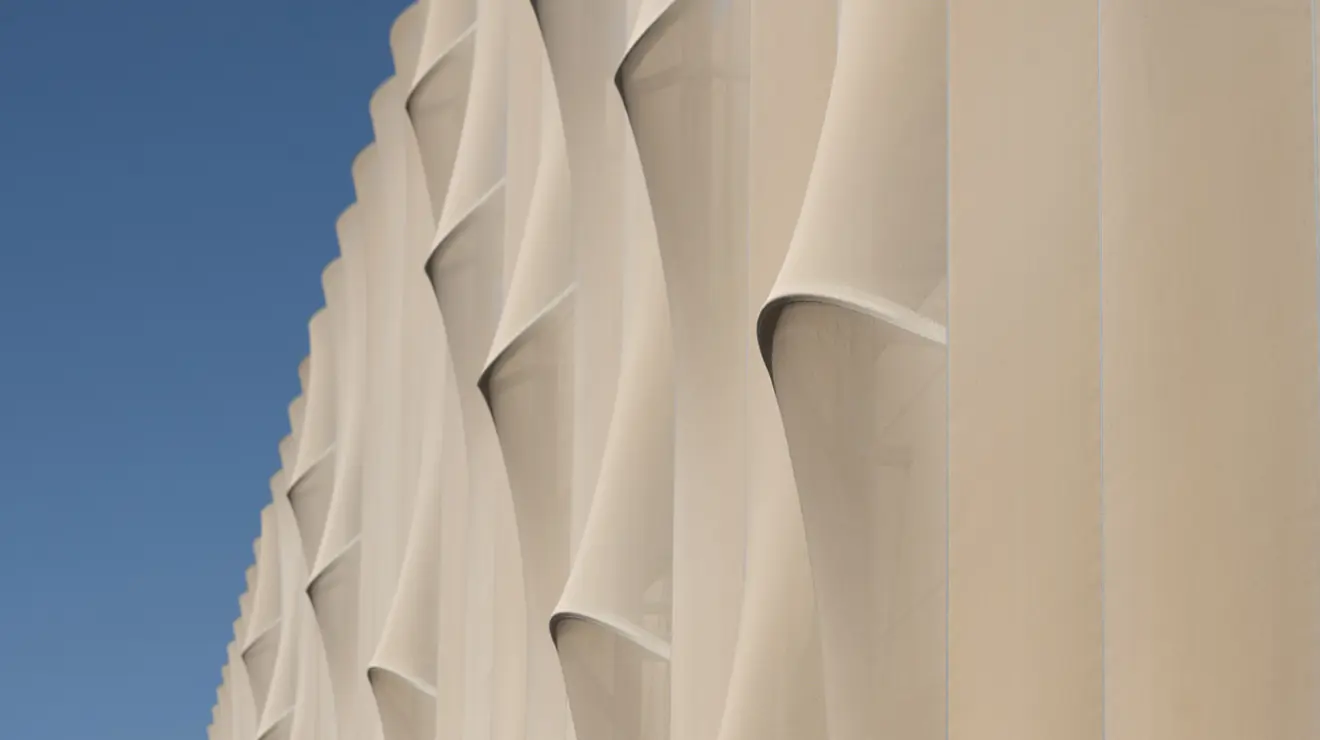
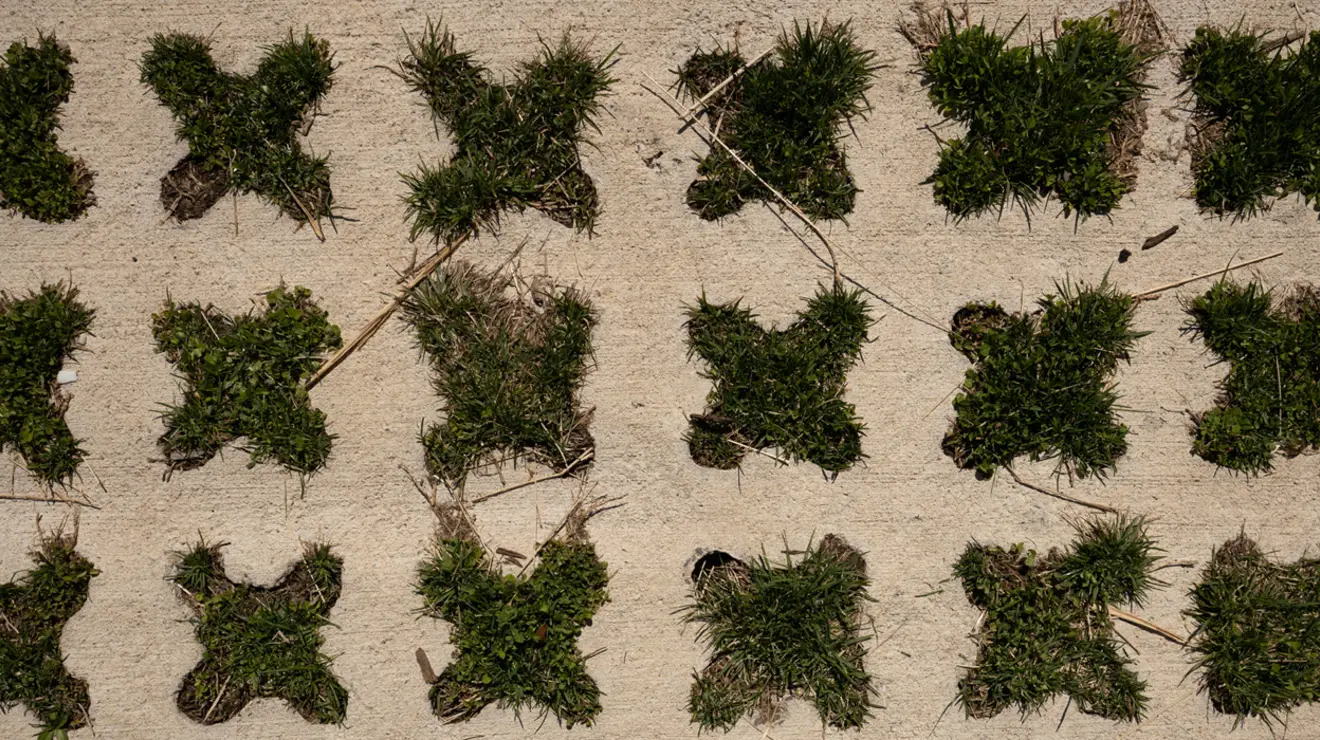
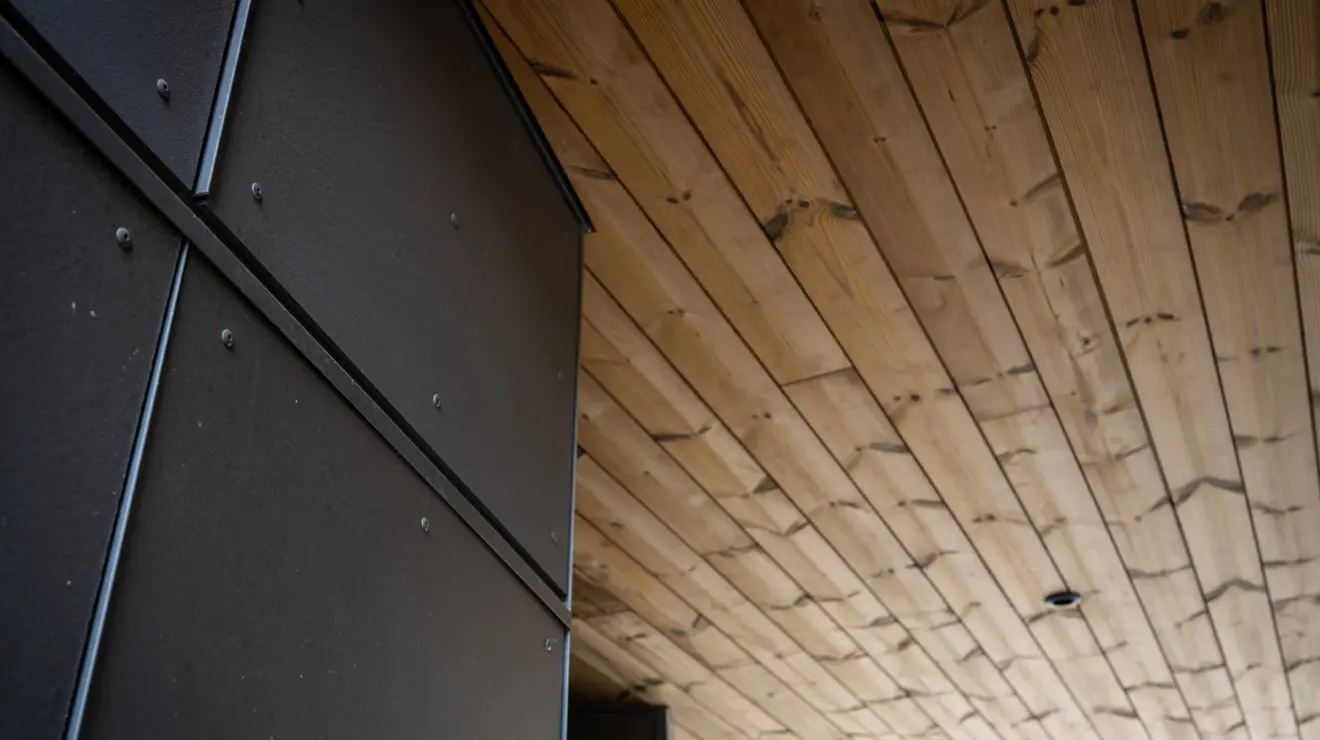
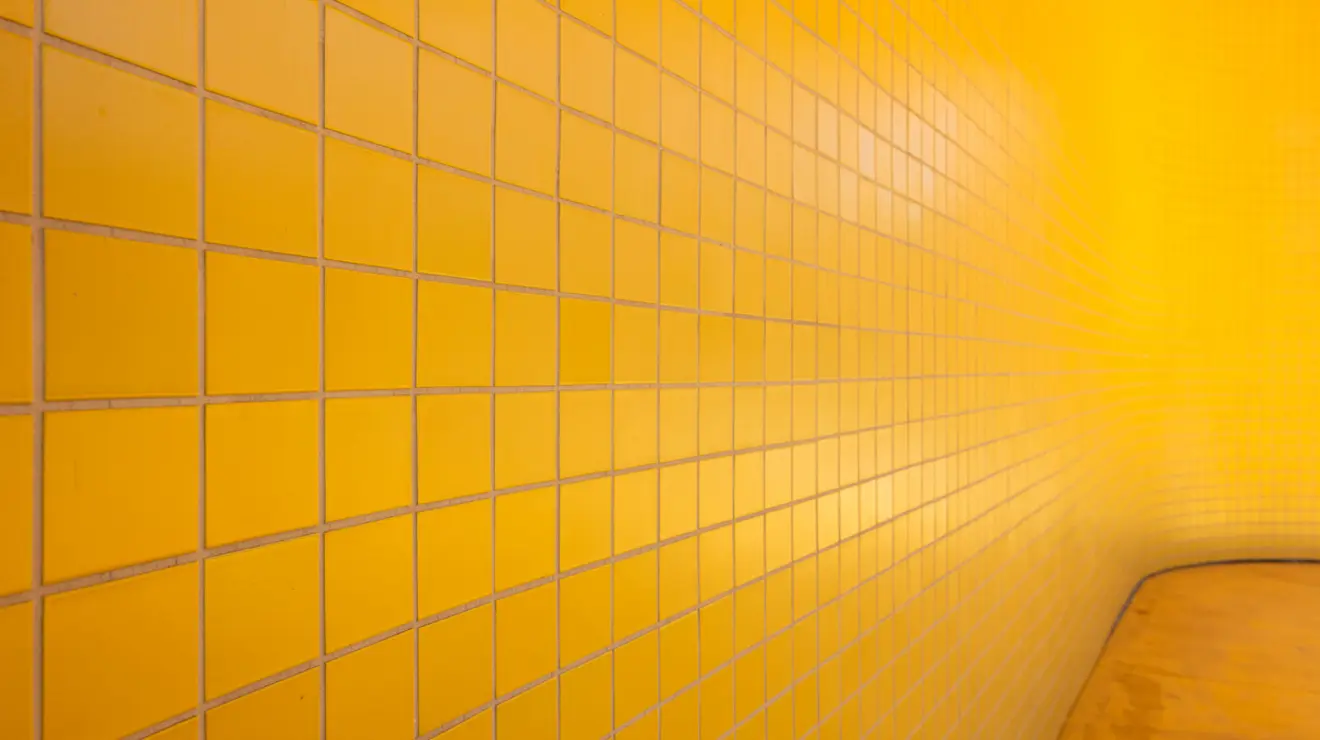
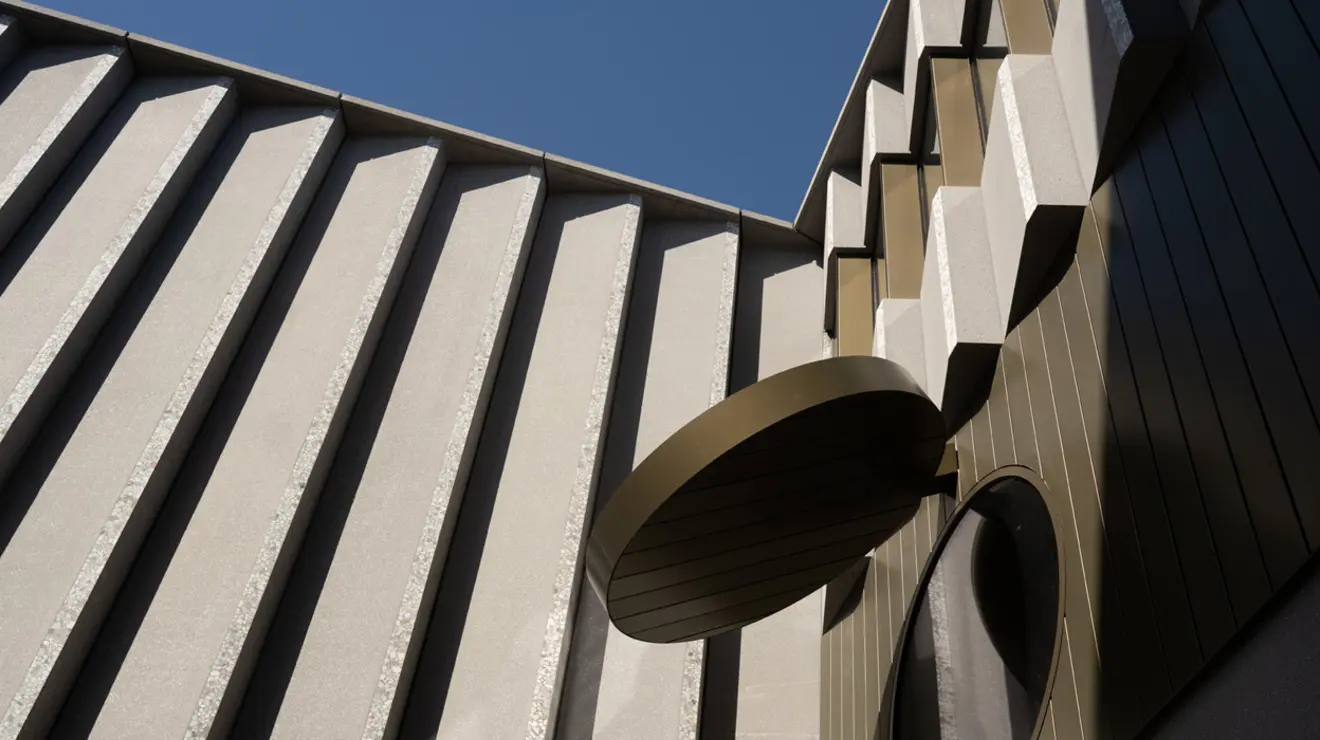
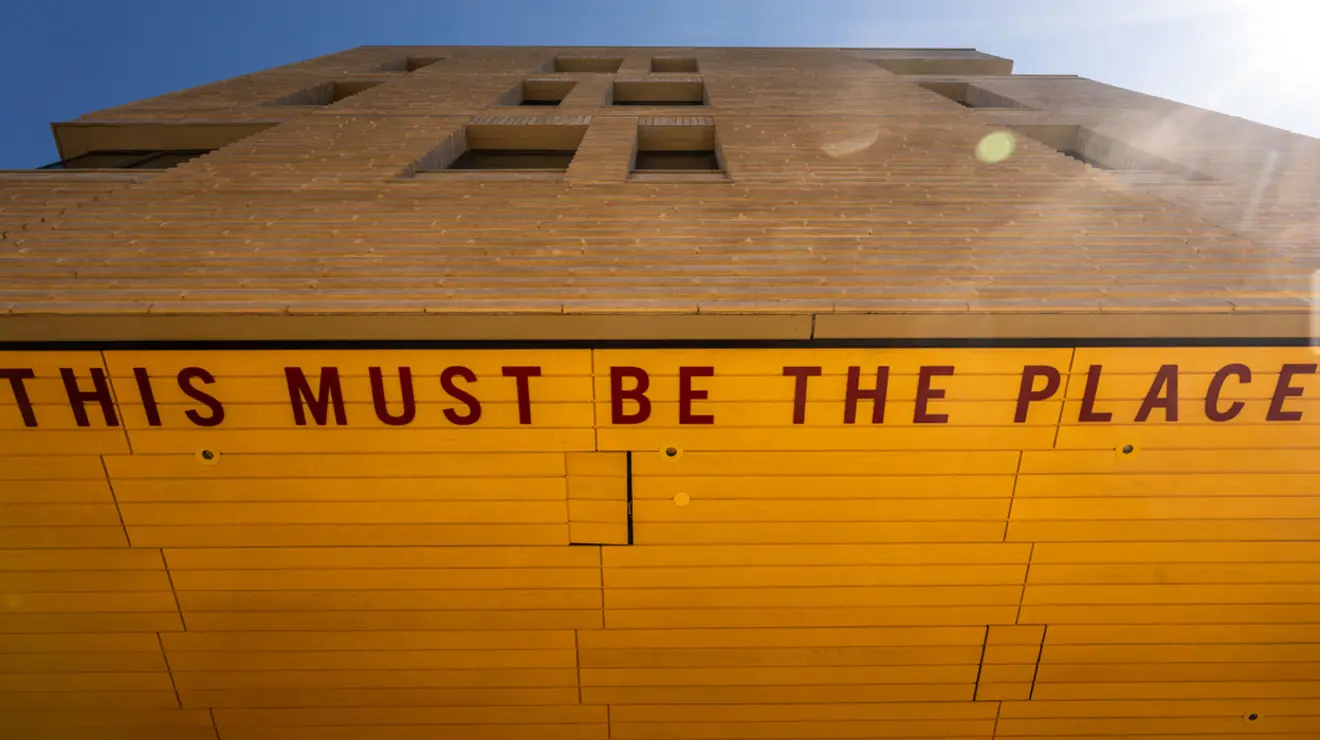





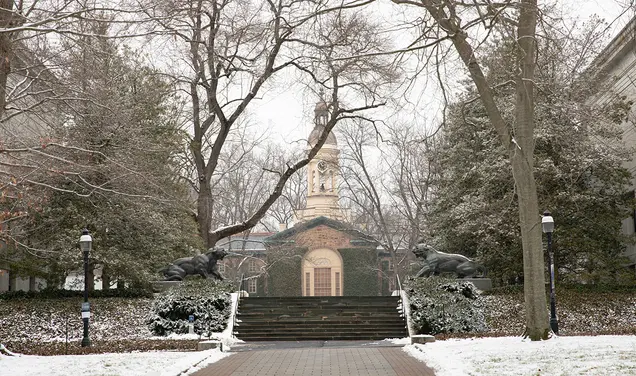
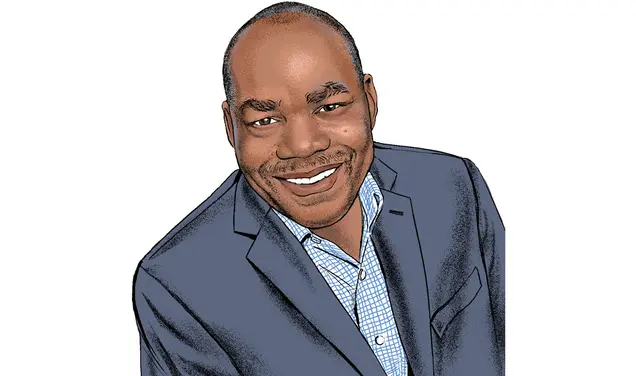


10 Responses
Peter Hawes ’65
3 Weeks AgoAddressing the Art Museum’s Exterior
I have seen only photographs and they are not flattering. Sadly, the paucity of compliments should encourage some people to consider additional treatment of the exterior to better harmonize with the campus or to hide as much as possible.
Bill Hewitt ’74
3 Weeks AgoComfort from Mark Twain
To paraphrase the quip about Wagner’s music (by humorist Bill Nye) that Mark Twain made famous, Princeton’s Art Museum isn’t as ugly as it looks.
Meaghan Byrne ’10
1 Month AgoQuestioning Art Museum Design Choices
I’ve been visiting the museum since I was 5 and visited the new building for the first time yesterday.
A few things stood out that seem to point to broader design choices. For example, many local schools still bring children here on field trips, so I was surprised to see how little the bathrooms accommodate younger visitors.
Other works of art featured QR codes, but the concrete structure makes it almost impossible for a phone to get service without Wi-Fi. Can you join the PU Visitor network? Yes, but only if you have already downloaded it and registered before entering the building.
The outdoor hardscaping feels similarly under-considered. A large, intrusive structure overhead and new brickwork now covers what was once a lovely courtyard. In developing this space, could it not have been shaped with more intention, perhaps by integrating natural elements rather than paving over them? Or by creating an amphitheater, or even a space where students could gather and play outdoor music? Shouldn’t an art museum make room for creativity rather than simply entombing older works?
All of this left me wondering how much “experience design” thinking informed the planning as a whole.
Inside, the galleries themselves are pleasant, and there is certainly more space, although some of it feels underutilized. I remain puzzled by the decision to include an expensive restaurant. Isn’t the University ultimately meant to serve students?
It seems this could have been approached differently. Of all buildings, it seems an art museum would warrant the most thoughtful design approach.
Reed M. Benet ’84
2 Months AgoArchitecturally, New Museum Is a Big Miss
Ah, how I remember my roommates and I laughing at the PAW Letters to the Editor from old fart alums complaining in often the most (as we have all since learned to call it) politically incorrect manner about everything then new at Princeton.
So I guess it’s my turn to do much of the same when it comes to describing the pictures I’ve seen of the outside and grand hall of the new Adjaye designed Princeton Art Museum as not only out of place but worse — butt ugly — as opposed to the recent Wall St. Journal critique that hardly gave the faintest of praise in suggesting that its style should not be described, as some do, as Brutalist but rather as Establishment Modern?
Note that I’ve been around enough to remember the controversy that surrounded I.M. Pei’s pyramid at the Louvre (which for me evokes Zen-like contemplation) and Maya Lin’s sunken Vietnam Memorial (which for me, when I ignore the kitschy statue, evokes tears), and I acknowledge that both were responses to different locational and elbow room opportunities and perhaps even advantaged by different functional challenges, but the best you can say about our new art museum is that it’s utilitarian?
Also I fully recognize that Princeton’s beloved collegiate Gothic buildings are an artifice of what turn of the prior century college architecture was supposed to look like … but really, who doesn’t love gargoyles?
Yet as I get closer to the grave and realize that almost all architecture will outlive me, not (yet?) having the money to pay for it to be torn down and rebuilt, say, with a competed for design that might blend functionality with either beauty or boldness, and with my recent 40th reunion trip back having me feel that the campus is claustrophobically overbuilt, as an old fart alum can I at least say that our museum is such a big miss that those who approved it should please seek other purviews?
Howard Wainer *68
5 Months AgoPerspectives on New Campus Arcitecture
As always, I read with interest the views expressed by other alumni on the new buildings that are nearing completion on our campus — especially the vehement observations on the new art museum.
They brought to mind a letter to the editor I read in Le Monde in 1973 about the recently opened Tour de Montparnasse. The critic, writing in French, asked the question “why is that 21st century Bauhaus monstrosity besmirching the noble architecture of our 18th century Paris?” Paired with that letter was one sent in by a local historian that featured a letter published in Paris more than 600 years earlier asking the parallel question about the recently completed Cathedral of Notre Dame — “what is that 14th century Gothic monstrosity doing in our 13th century Paris?” It seems that it may take some time to fully understand and appreciate new arrivals to our campus.
William B. Rhoads ’66 *75
7 Months AgoDemolition of Cram’s McCormick Hall
Where should we, or future archaeologists, look for the finely crafted stones from Ralph Adams Cram’s McCormick Hall, demolished for the new Art Museum? We are reminded of the wonderful stonework from McKim, Mead & White’s demolished Pennsylvania Station, strewn about Secaucus Meadows in the 1960s.
Rich Baxter ’86
6 Months AgoNew Buildings Display Lack of Restraint
How can anyone think this building effectively coexists with its neighbors? It’s a vanity project. An appropriate monument to the complete lack of restraint of the uninspiring trustees and faceless bureaucrats who run the University with no accountability today. History will show this building and Hobson College as the perfect embodiments of their 15 minutes of fame at Princeton and the damage that can be wrought. Forgive them, God, they know not what they do.
Rick Mott ’73
7 Months AgoDropped by Aliens?
The drone view on the cover makes clear what happened. A giant alien container vessel, crewed by descendants of the bozos who dropped the pyramids in the desert, must have jettisoned some of their empties over Princeton. Made of sturdy stuff, they landed on the art museum, crushing it flat and bringing an entirely new meaning to “Art and Archaeology.” On the bright side, the archaeology department’s new lab space in the basement allows students to practice their field work in indoor comfort, excavating bits of old artworks and assistant professors.
David Chamberlain ’71
7 Months AgoIntrigued by the Conception of Our New Art Museum
As one of Princeton’s few professional artists (painting, sculpture, and music) and an erstwhile architecture design professor I confess to being thrilled, in advance, by this anticipated new building and its visionary approaches.
The campus-centric placement, boldly perceptive by traditional academic standards yet overdue from a cultural perspective, rings true for me. It feels like the fine arts, as the creative face of our comprehensive liberal arts curriculum, is coming home to roost. Smack dab into the core, the heart, of campus life.
Like the words creation and composition, we can appreciate that design is both noun and verb. It represents both product and process. As such, this refreshingly circulatory museum design springs from a thoughtful and innovative thinking process that imagines and presents a living, breathing product. It’s an engaging spatial composition that will serve us beautifully through the inspired integration of its program & edifice, and its well-informed assimilation of interior and exterior characters.
Artists learn the importance of reserving judgment on a work in progress until it is finished. We wisely resist the premature reveal. Incomplete formulations, like an inspired senior thesis near the due date, need the synthesis of a final chapter and summary; ideally reviewed forthrightly with intellectual curiosity, interest, rigor, and respect.
Once handed in, I encourage us to read this dissertation all the way through before grading. Meanwhile, I am reminded of the old sculptors’ maxim: “Every pigeon is a critic ...”
David Thom ’96
8 Months AgoAppalled by the Placement, Design of New Museum
I’m truly glad that former professors Robert Clark *74 and David Billington ’50 never had to gaze upon this monstrosity. It would break their hearts. As a former Orange Key historian, architecture student, and civil engineering major, I find this complex appalling. History will not be kind to those who decided to place a flat-roofed, blank-sided Costco-sized facility in the middle of the historic campus rather than out on the undefined periphery. This is not even a chiefly academic building but rather one that will need many school buses full of visiting high school students each day to fill it. It could have been a very interesting building on Washington Road or Alexander Road or Nassau Street defining a new streetfront presence. But next to Cannon Green this is a disaster.